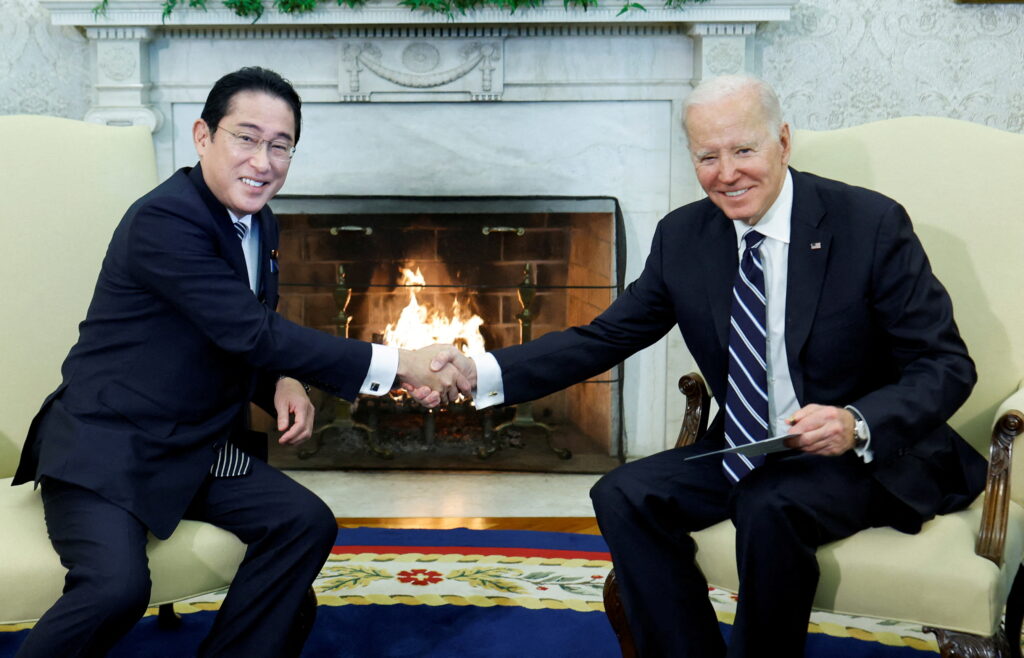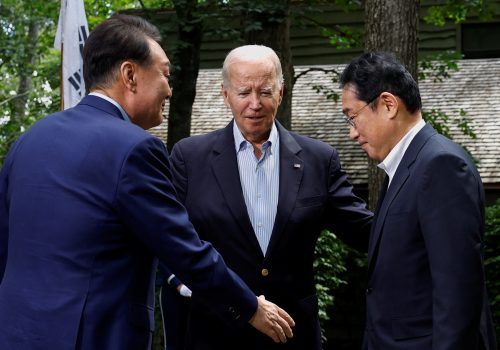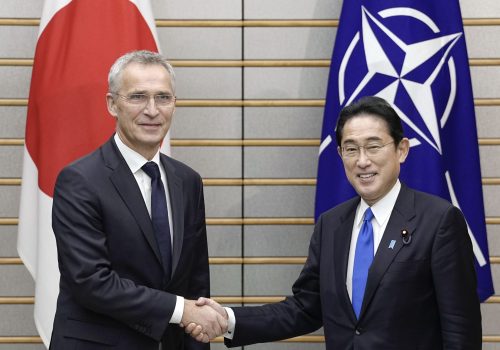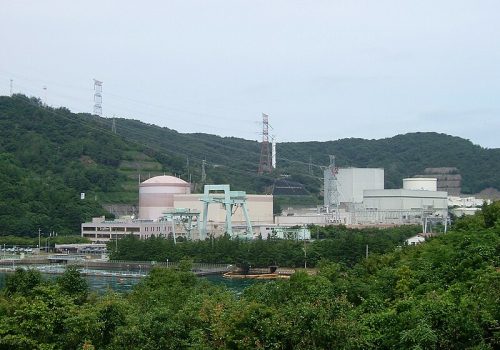On April 10, US President Joe Biden will welcome Japanese Prime Minister Fumio Kishida to the White House for an official state visit. There they are expected to make significant upgrades to the US-Japan Security Treaty. While the exact details are still unclear, the upgrades are not about changing the alliance’s strategy, but rather about improving how Japanese and US forces coordinate their readiness and operations.
The drivers of these upgrades to the security pact are three-fold. The first, of course, is an increasingly challenging Indo-Pacific security environment, especially with China and North Korea enhancing their military capabilities in recent years and becoming more aggressive in their attempts to change the status quo in the region. The threats include instances of aggression and gray zone operations, such as air and maritime incursions, naval harassment, weapons tests, and suspected cyberattacks. These threats could be the seeds of larger risks, which could lead to simultaneous conflicts in the Indo-Pacific region.
The second driver is the changing nature of warfare—not simply the development and operationalization of new military technologies, but also the diversification of warfare domains. Warfare domains now extend beyond the traditional ground, maritime, and air domains to include cyberspace, outer space, and even the cognitive domain.
The third driver is the need to reconfigure the alliance to the recent changes in Japan’s strategic planning. In December 2022, Japan unveiled its National Security Strategy, National Defense Strategy, and Defense Buildup Plan. These plans are aimed at significantly sharpening and strengthening Japan’s defense strategy and readiness while still adhering to Article 9 of the Japanese constitution, which renounces war and the threat or use of force. The changes are expected to make Japan and the Japan Self-Defense Forces (JSDF) more proactive in their defense posture and readiness. These changes warrant upgrades in how Japan and the United States work together in their security partnership.
Taken together, Japan and the United States are making necessary upgrades to their alliance. These upgrades are intended to enhance their readiness to deal more effectively and efficiently with threats in the Indo-Pacific. Still, although Tokyo and Washington are making efforts on the right path, the credibility and effectiveness of the alliance’s development will hinge on how the changes are implemented and operationalized in the coming years.
Now is the right time to make updates to the alliance. In the years ahead, the United States and Japan should boost the alliance’s capabilities and means of operations. Even though Japan and the United States possess advanced capabilities, improvements in those of China and North Korea call for greater assets to defend against and deter those threats. One area of improvement is better missile defense systems and strike assets warranted by the boost in China’s and North Korea’s missile inventories. Although Japan will be limited in its counterstrike capabilities to cruise missiles in the near term, Tokyo is taking steps to field hypersonic weapons systems and there is also support among some Japanese experts and lawmakers for fielding medium-range ballistic missiles in the future.
Japan and the United States will also need greater readiness for asymmetric operations, given that both are increasingly exposed to China’s anti-access/area denial capabilities. Under such circumstances, readiness to deny and disrupt an opponent’s operations by imposing costs and penetrating their vulnerabilities would be critical. This would include cyber and electronic warfare capabilities, as well as sea denial operations such as naval mine and submarine warfare.
The other critical area—one that is expected to be at the center of the upcoming changes—is how Japan and the United States can better connect their command-and-control structures and functions. The demand for changes comes from the need to better coordinate Japanese and US capabilities and to create the framework in which they can do so in the absence of a combined command structure like that of the US-South Korea alliance.
Some steps are already underway. Japan is expected to establish its permanent joint headquarters (PJHQ) by March 2025 to facilitate greater coordination among the ground, maritime, and air branches of the JSDF for joint operational readiness, which will give greater clarity to the JSDF’s operational framework. At the same time, the United States is taking important measures, particularly in establishing a Japan-based joint task force within the Indo-Pacific Command to be a counterpart of Japan’s PJHQ.
Beyond the structural aspects, interoperability and interchangeability will also be vital, where the problems are not simply about operating and connecting hardware, but also aligning operational practices and procedures. For example, in the case of missile defense and counterstrike operations, Japan and the United States will need to further integrate their sensor-to-shooter systems and make one another’s systems compatible. They will also need to ensure that the units and personnel of the two forces work according to integrated or compatible procedures. While such undertakings are certainly not easy, they are essential in enhancing the alliance’s combat effectiveness.
These new command-and-control structures and functions can network Japanese and US weapons systems to create an allied “kill web” as well as streamline logistics and supplies. Such enhancements will be essential if a crisis breaks out in the region.
Indeed, Kishida’s state visit to the United States and the upgrades to the US-Japan alliance that the two leaders lay out on April 10 should be merely a starting point. The details will be formulated, implemented, and operationalized in the coming years through various efforts and exchanges as well as possibly an updated Guidelines for Japan-US Defense Cooperation. These efforts are essential in dealing with the increasingly complex threats confronting both countries in the Indo-Pacific, coming from both China and North Korea.
Ryo Hinata-Yamaguchi is a nonresident senior fellow in the Scowcroft Center’s Indo-Pacific Security Initiative, a project assistant professor at the University of Tokyo, and an adjunct senior fellow at the Pacific Forum.
Further reading
Fri, Aug 18, 2023
Experts react: The US-Japan-South Korea summit was ‘historic.’ But what did it accomplish?
New Atlanticist By
President Joe Biden, Prime Minister Fumio Kishida, and President Yoon Suk Yeol set forward a common security agenda at Camp David. Atlantic Council experts share their insights on what's next.
Mon, Jun 12, 2023
What’s really behind plans for a NATO office in Japan
New Atlanticist By Sara Bjerg Moller
What's really behind Japanese Prime Minister Fumio Kishida's recent announcement that his government is exploring opening a NATO-liaison office in Tokyo?
Mon, Oct 23, 2023
Atoms for Peace 2.0: The case for a stronger US-Japan nuclear power alliance
EnergySource By
Against the backdrop of Russian and Chinese-induced geopolitical instability, Tokyo and Washington should redouble commitments to the peaceful use of nuclear energy.
Image: U.S. President Joe Biden shakes hands with Japan's Prime Minister Fumio Kishida during a bilateral meeting in the Oval Office at the White House in Washington, U.S., January 13, 2023. REUTERS/Jonathan Ernst



